|
The ratio of the number of cases that "should have been" in isolation to the number of cases that "were" in isolation is currently about 20 and the contact tracers appear to be overwhelmed. Only 2% of the daily cases are isolated at present. It is estimated that about 40% of daily cases must have been isolated (diagnosed in isolation) for the community to community spread effR to be below 1 and end the current wave. 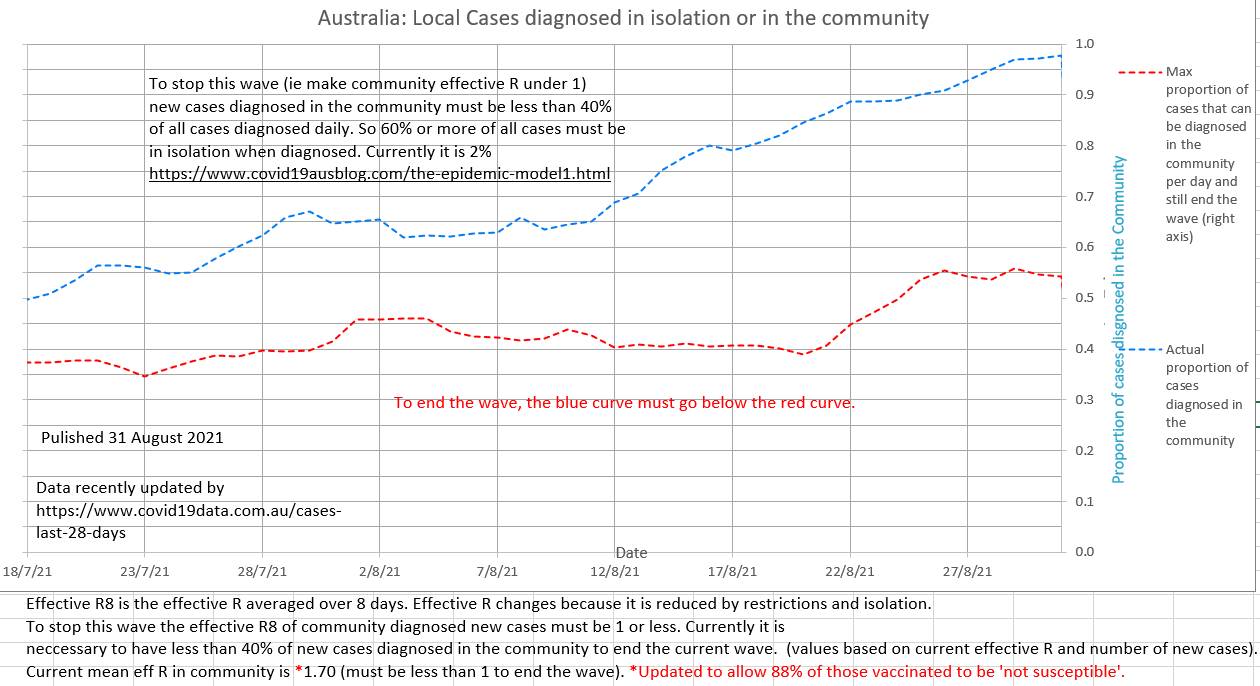 Since 22 August the general restriction in place do appear to be reducing the effR of community to community spread, although it is still high and exponential at 1.70
0 Comments
Surprisingly, since the US is experiencing a major wave, vaccination rates are slow and some state governor are arguing in supreme courts that various types of restrictions cannot be enforced. If the current trend continues our model projects over 350,000 new cases a day in October 2021 and 51 million total cases and 1 million total deaths by 20 February 2022. Some states already report that they are running out of supplies and available beds in hospital (eg https://www.texastribune.org/2021/08/27/texas-schools-covid-19-cases/amp/) . Currently the effR is 3.1 and 52% of the population is fully vaccinated. Unless vaccination rates or restrictions increase the epidemic of deaths are projected to increase by our model, perhaps peaking at over 5,000 a day in November. The grey graph below shows the 5 day mean of the actual daily deaths. A suggested case fatality rate (CFR) and average days from diagnosis to death can be entered in the green box on the left. The suggested values can be changed in the green box until the green graph best matches the grey graph of actual cases. When the green graph matches the grey graph near today's date, then the CFR and days to death in the green box are the current CFR and days to death. Various values for CFR and days to death (CFR from 1.3 to 1.7 and days to death from 17 days to 21 days) have been used to make the green graph fit the grey graph for other time periods.
The object of isolation is to stop the spread of Covid-19 in the community. But how many of the cases detected in a day should have been in isolation?
Community case to community case spread will slow and stop when community to community effR is 1 (or less). And it is possible to calculate the number of cases that would occur in the community if the effR was 1. All the rest of the day's new cases should have been in isolation. If they were, then the current wave will end, if not the current wave will continue. Plotting the number of cases that were isolated and the number of cases that should have been isolated shows that each day Australia is far from isolating the necessary number of infected cases. The effR of community to community spread is probably showing a slight downtrend, but contact tracing with Delta strain Covid-19 has not managed to isolate the necessary number of cases. https://www.covid19data.com.au/cases-last-28-days updated and backdated its data today.
The volatile daily effR is 1.26, but the more stable and meaningful mean effR of community spread (R8) is 1.59 and possibly showing a slight early down-trend. The maximum proportion of cases that can be detected in the community and still end the current wave (ie bring community effR to 1 or less) is 40%. Currently it is nearly 90%. Delta strain is difficult to trace before it spreads, so ensuring early isolation of contacts is difficult. Cases continue to rise in the US during the current wave. The effR is 2.51 which appears to be decreasing for an unknown reason - perhaps some states are following restrictions. The projection is for a total of 65 million cases and 1 million deaths by mid February 2022 at the end of the wave and epidemic. The CFR remains 1.3 and the average time to death is about 20 days.
Vaccination of EVERYONE (100% of the population, including children) is the way forward. IMHO it is not ethical to leave children unvaccinated in the face of a potentially fatal disease if the benefits of vaccination are greater than the risks. And the benefits greatly outweigh the risks based on all the evidence and its rational assumptions for the future both for Pfizer and AstraZenica. AstraZenica is safe by any reasonable standard. And it is legal to have a child vaccinated by your local doctor 'off label' if she believes that the the benefits outweigh the risks and documents the discussion and obtains a signed consent. Australia needs to have isolated 60% of the daily new cases. Currently they have achieved about 11% (5 day average). The graph below shows community cases - the opposite of isolated cases. The 'goal posts' of 57% for the maximum proportion of new daily cases that can be in the community and still end this epidemic wave is the goal post for today only. It will fall to about about 40% maximum allowable community cases as case numbers fall. The blue curve needs to be continually and convincingly under the red curve. The effR for community to community spread (the effR that counts, since those in isolation are 'dead ends' for spread) is still high and not convincingly decreasing at 1.59 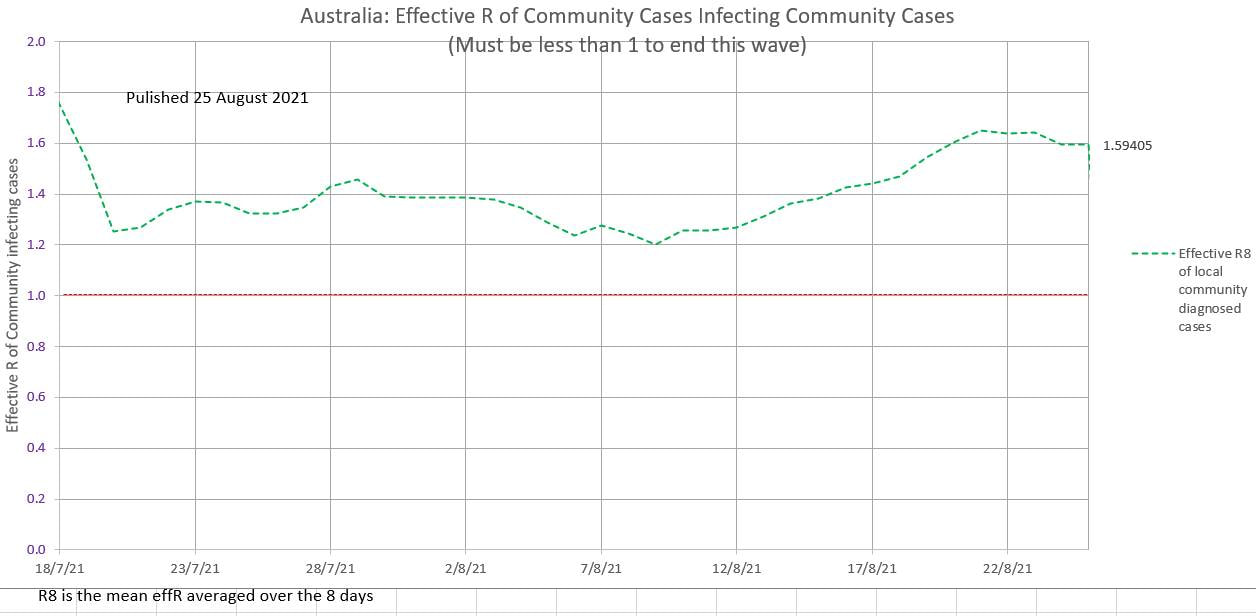 Cases continue to climb on a 5 day average. 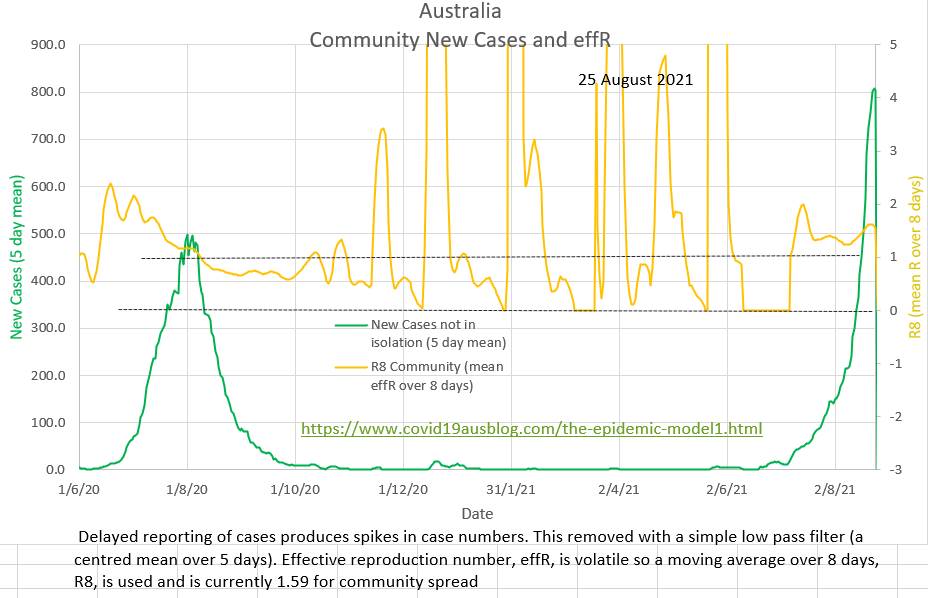 Vaccination appears to be the way forward. Restrictions and lockdown will probably not contain Delta strain Covid19 because the reproduction number R₀ is too high and the normal distribution of human behaviour, at its extremes, predicts non-compliance. Cases infected and then potentially infecting in the community (community cases) continue to rise as does the effective R (effR) which is about 1.6, which is epidemic, instead of the 1.0 required to end the wave. Cases in isolation are 'dead ends' to spread and are not relevant to community effR. 60% of daily cases should have been in isolation in order to end the wave, but only 9% of mean daily cases over the last five days have been in isolation. Restriction will probably not halt the current wave and there will always be leaks in Australia's border (quarantine and isolation). Vaccination appears to be the only way forward. It will reduce, but not stop, the spread. But the main advantage of vaccination is that it is very good at preventing severe disease and death. The whole population who wish to be vaccinated should be vaccinated. Those who choose not to vaccinate have a right to do so. But it is not ethical to fully open up until all adults and all children who wish to be vaccinated have been given an opportunity to do so. |
AuthorDr Michael Cole FRACP LLB Archives
September 2021
Categories |
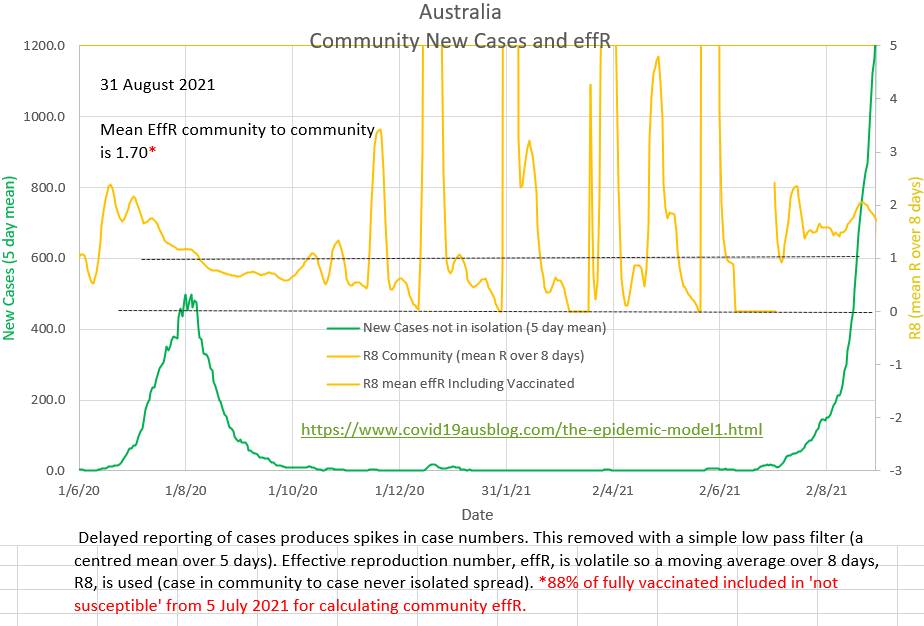
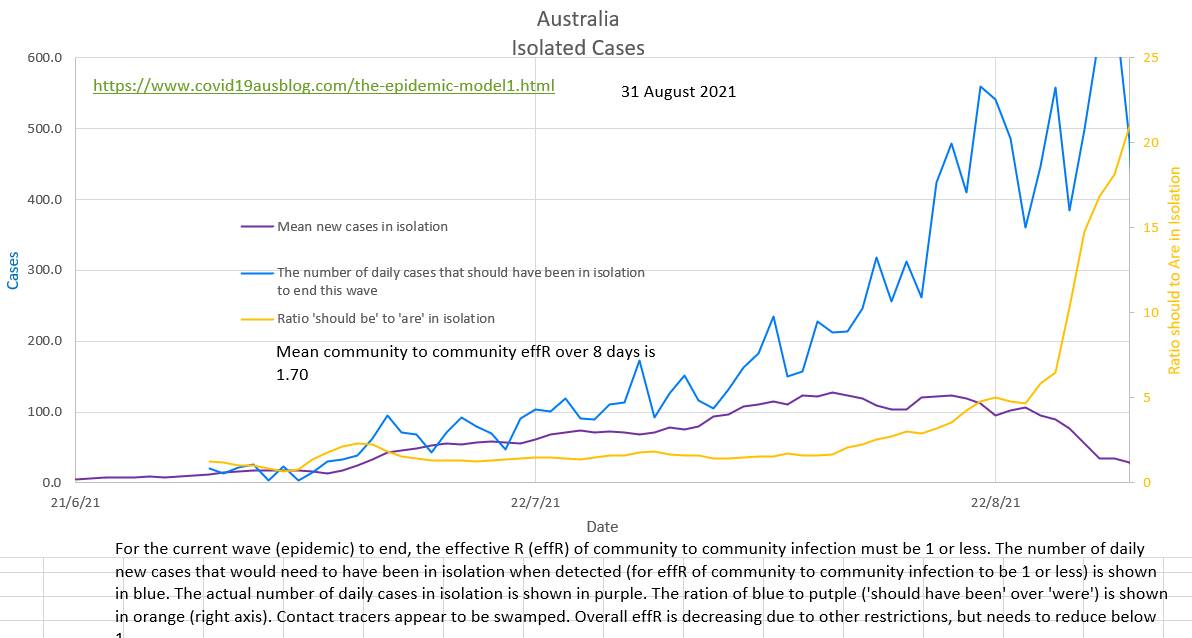
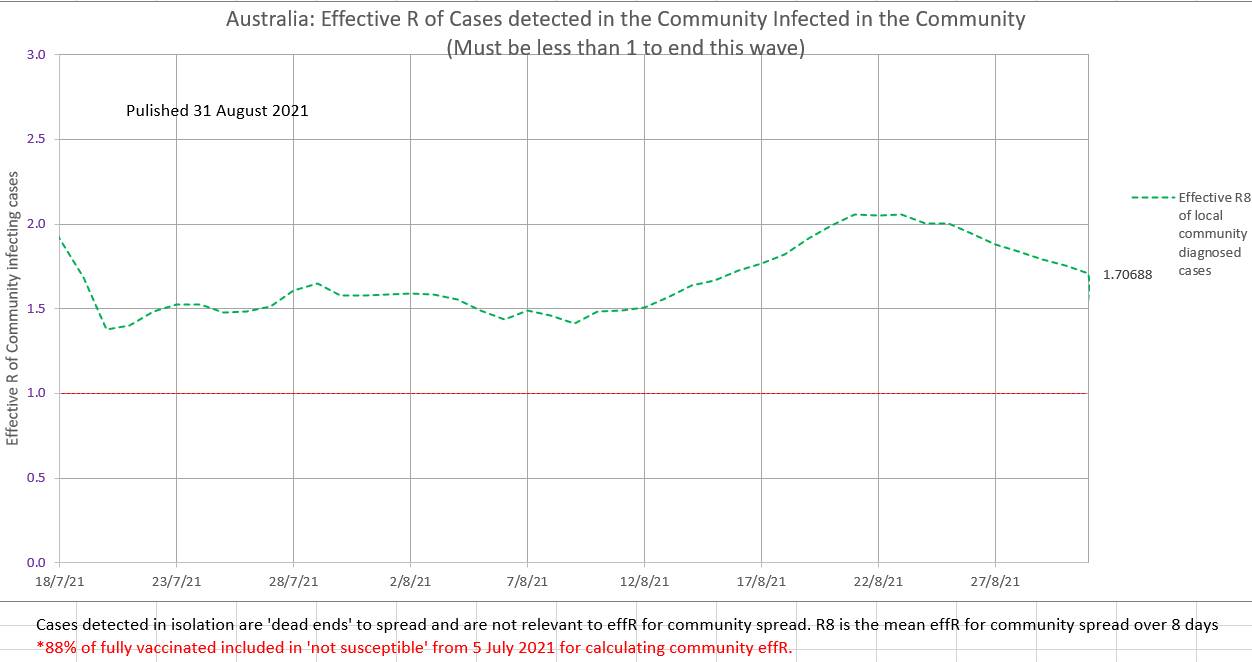
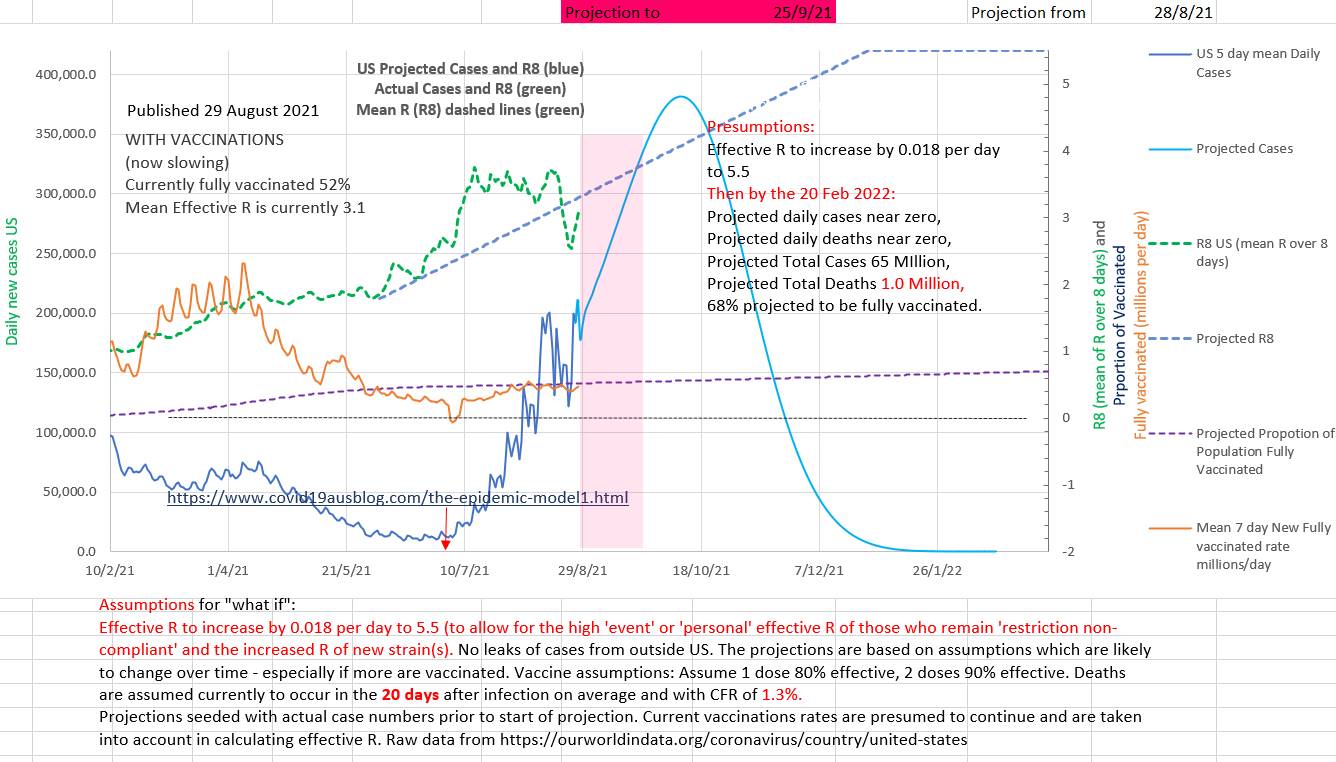
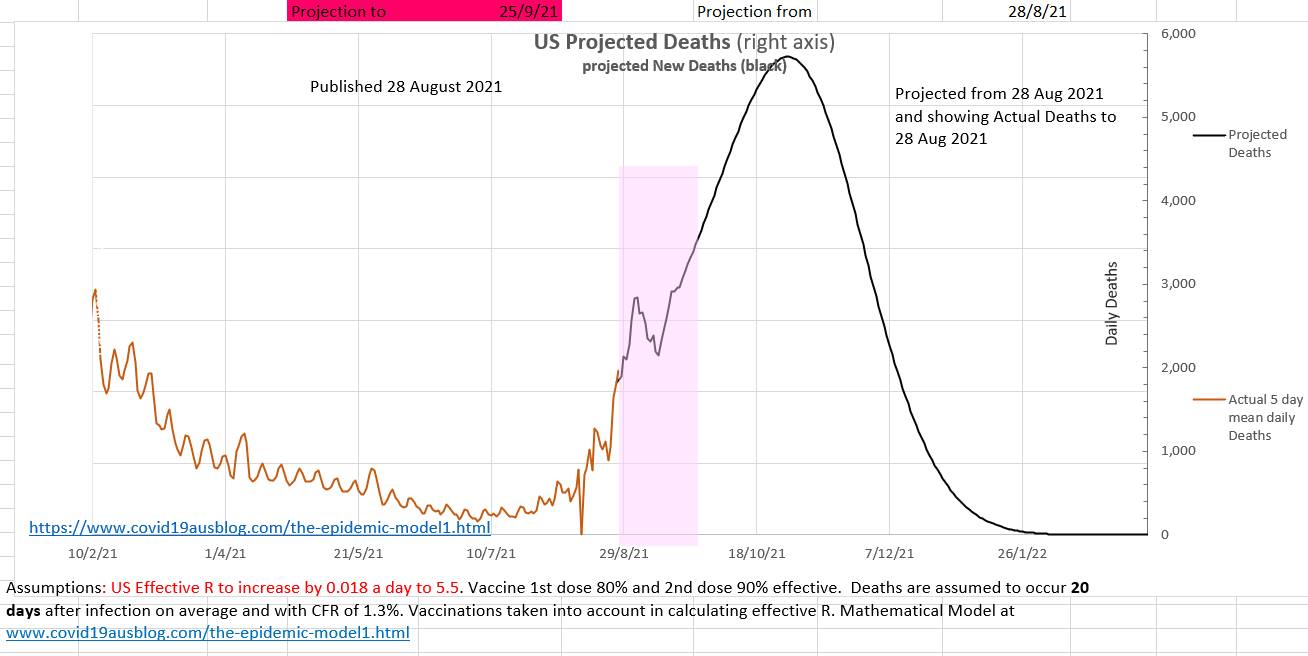
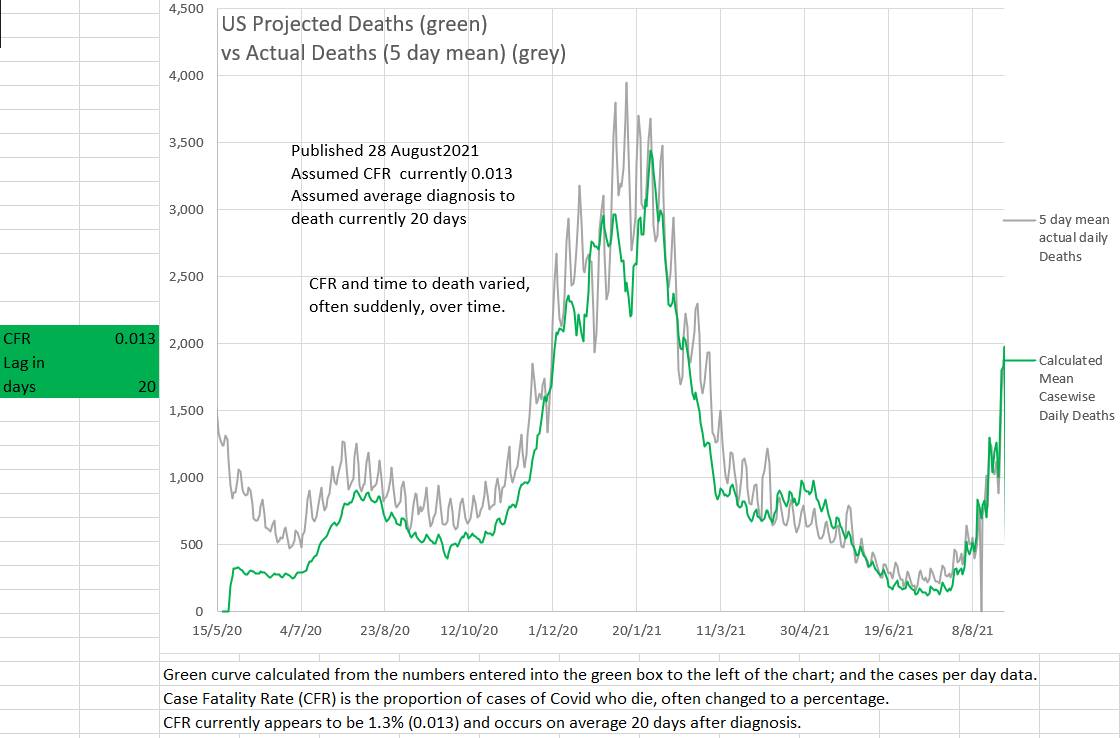
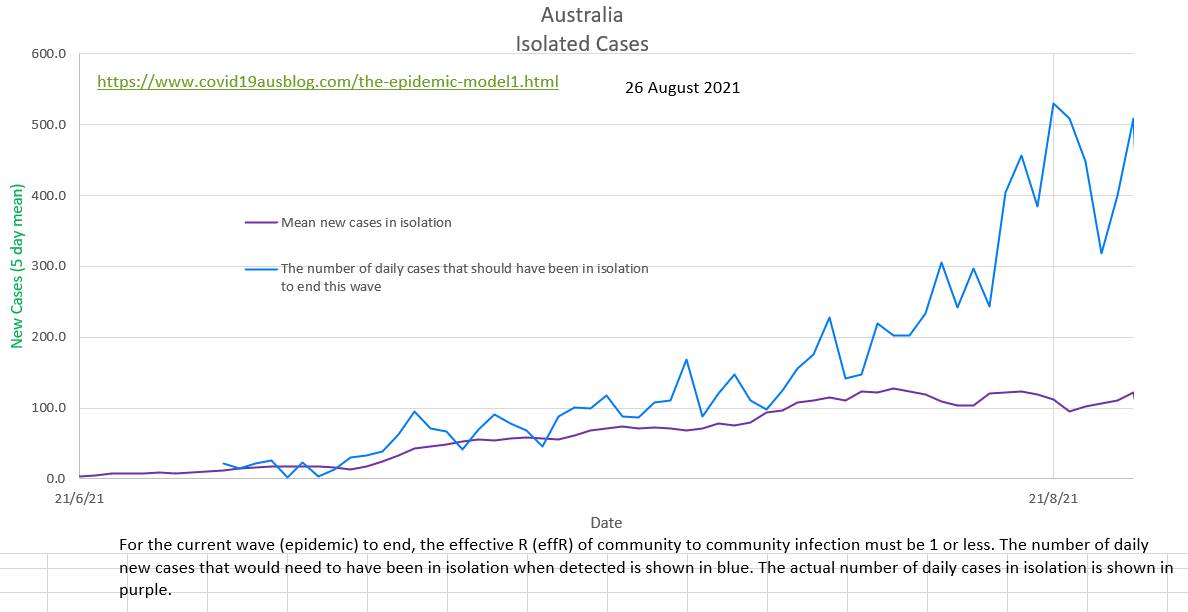
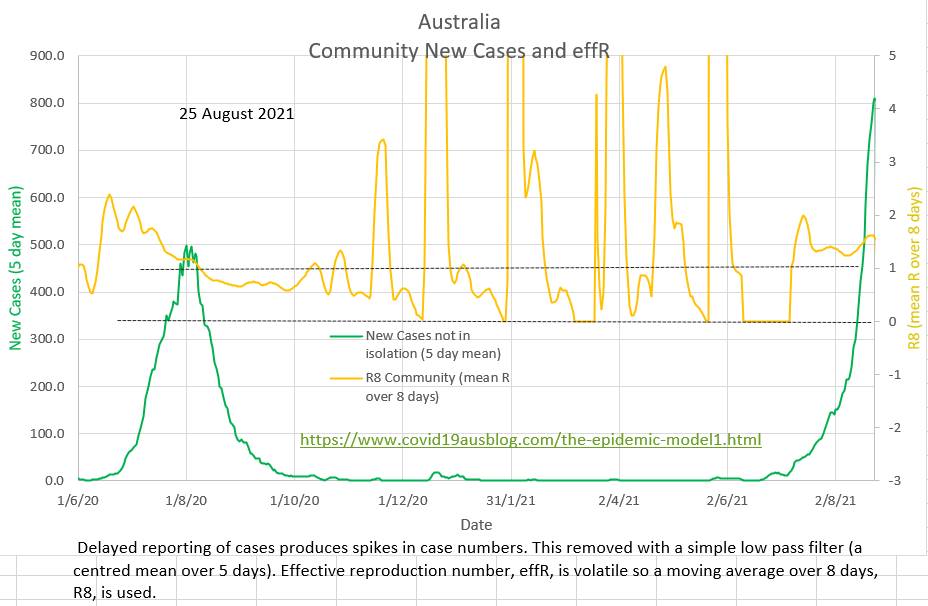
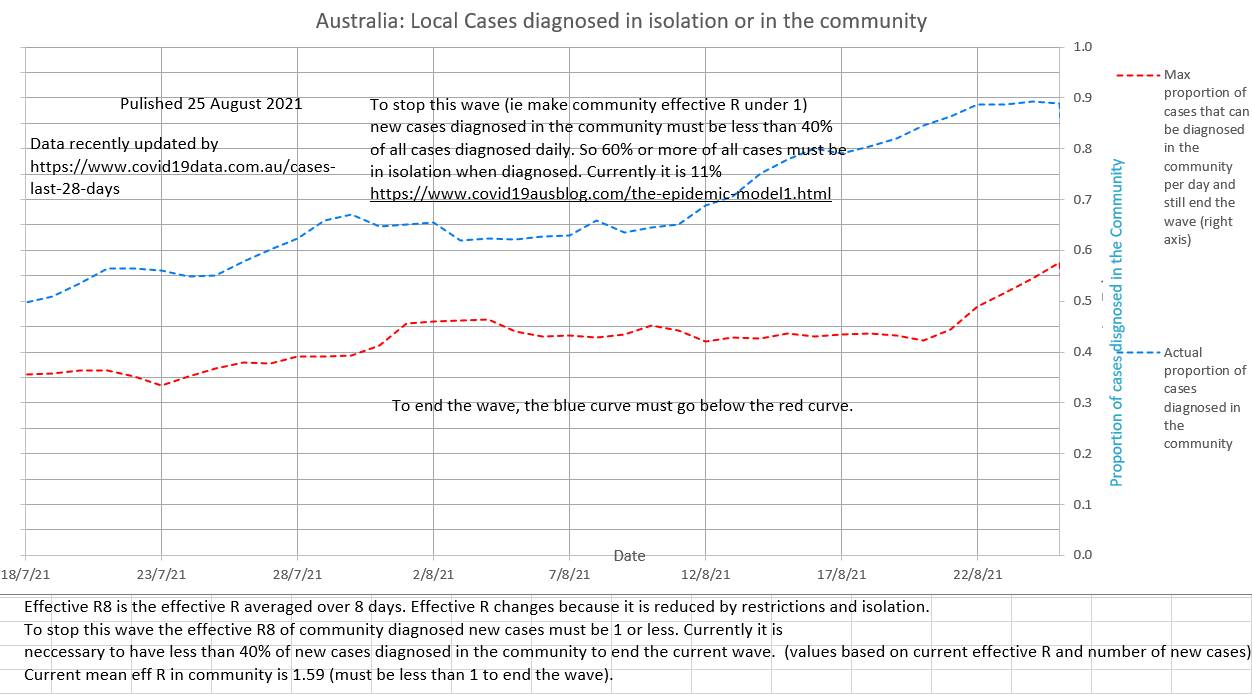
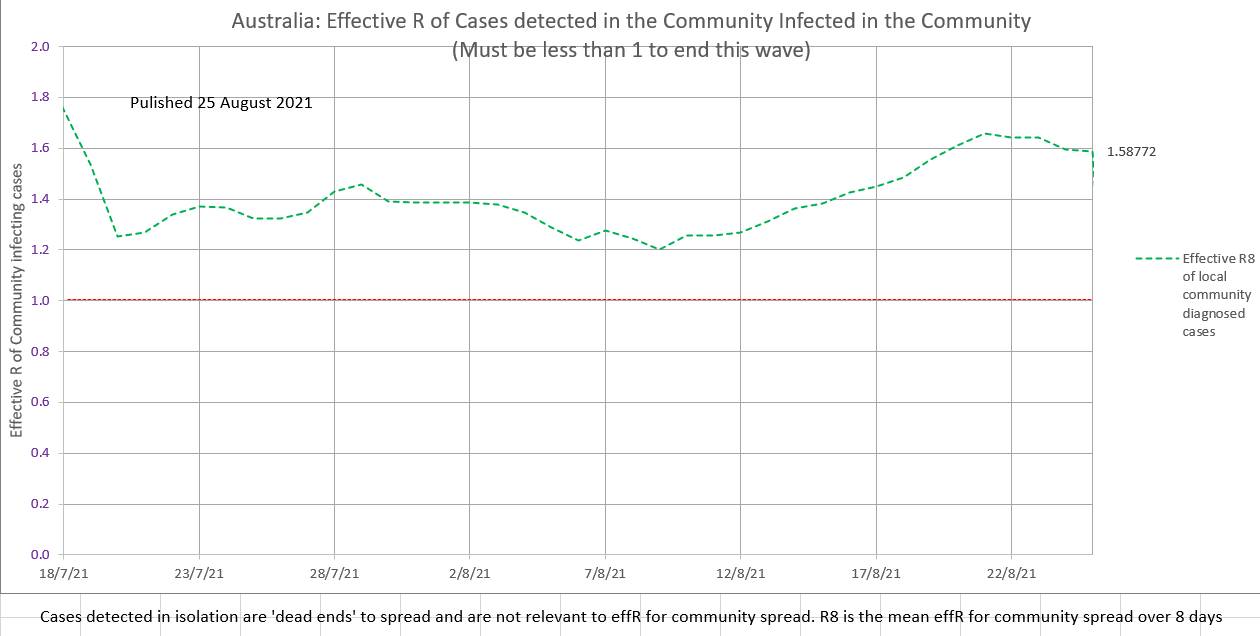
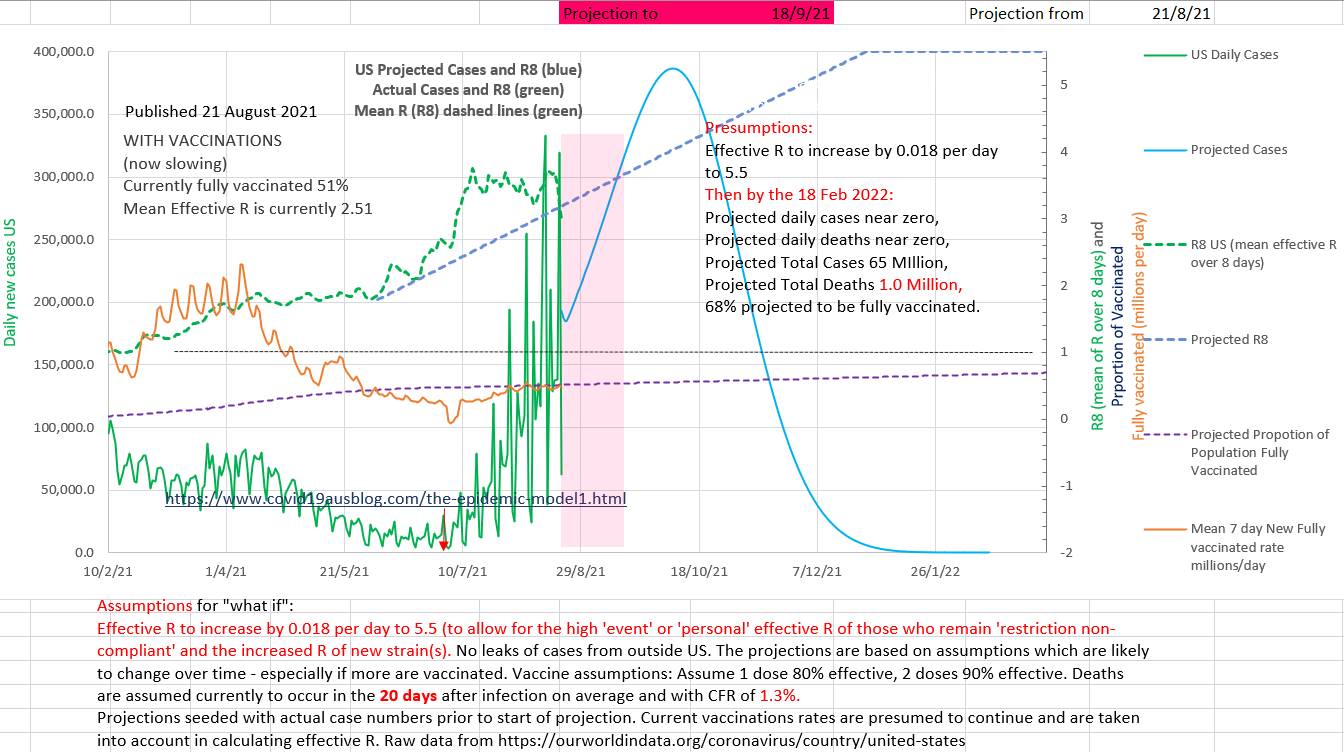
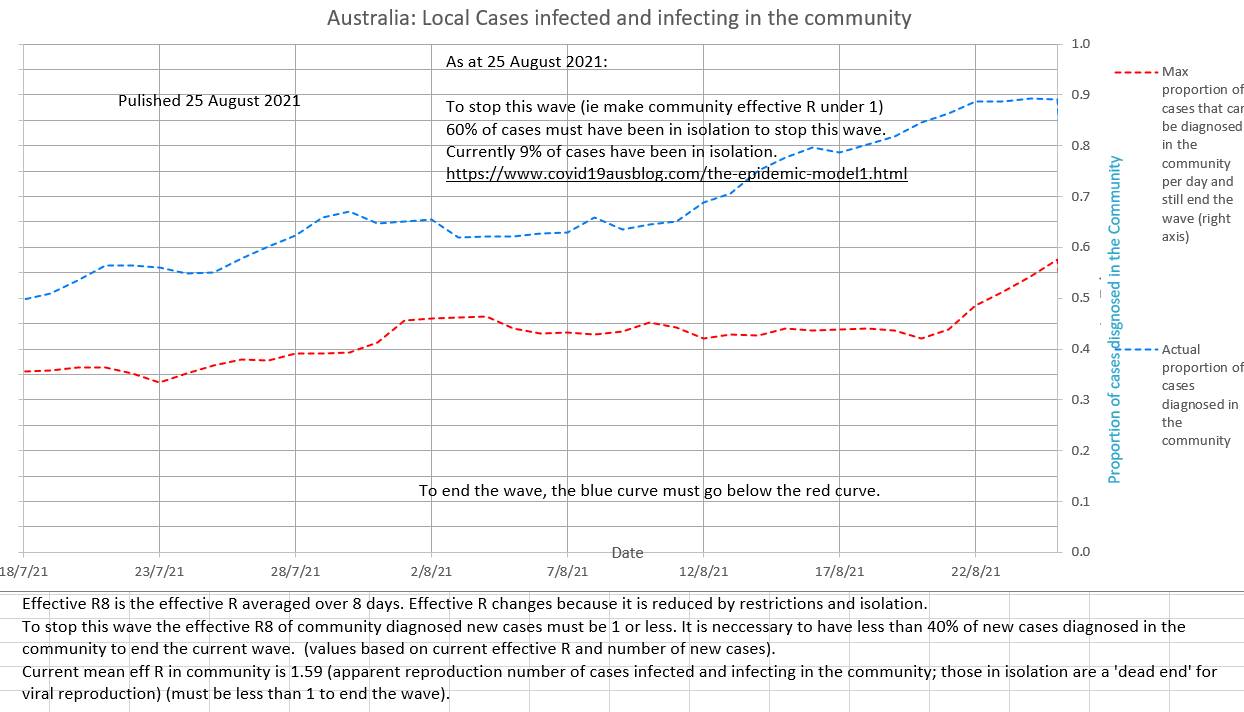
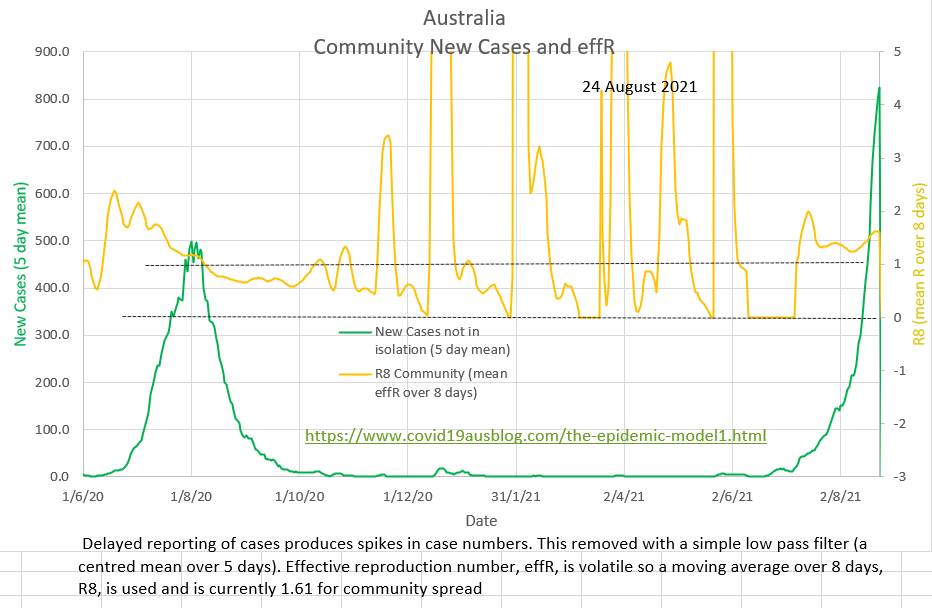
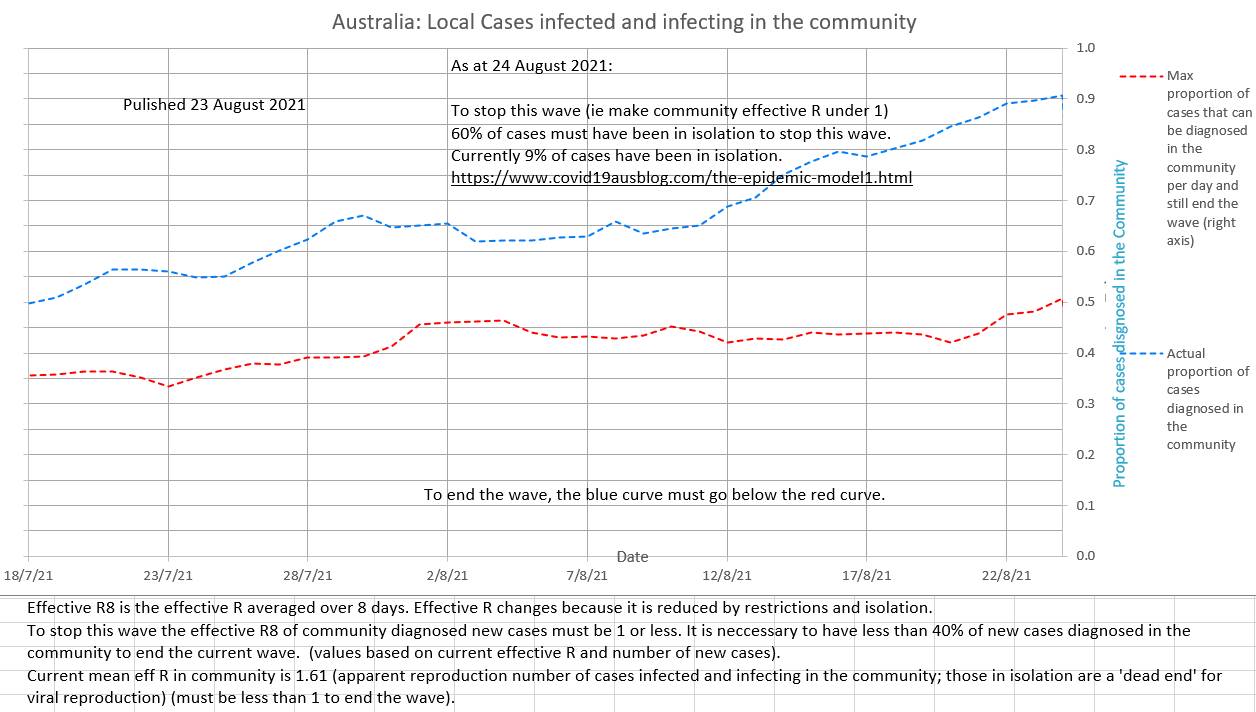
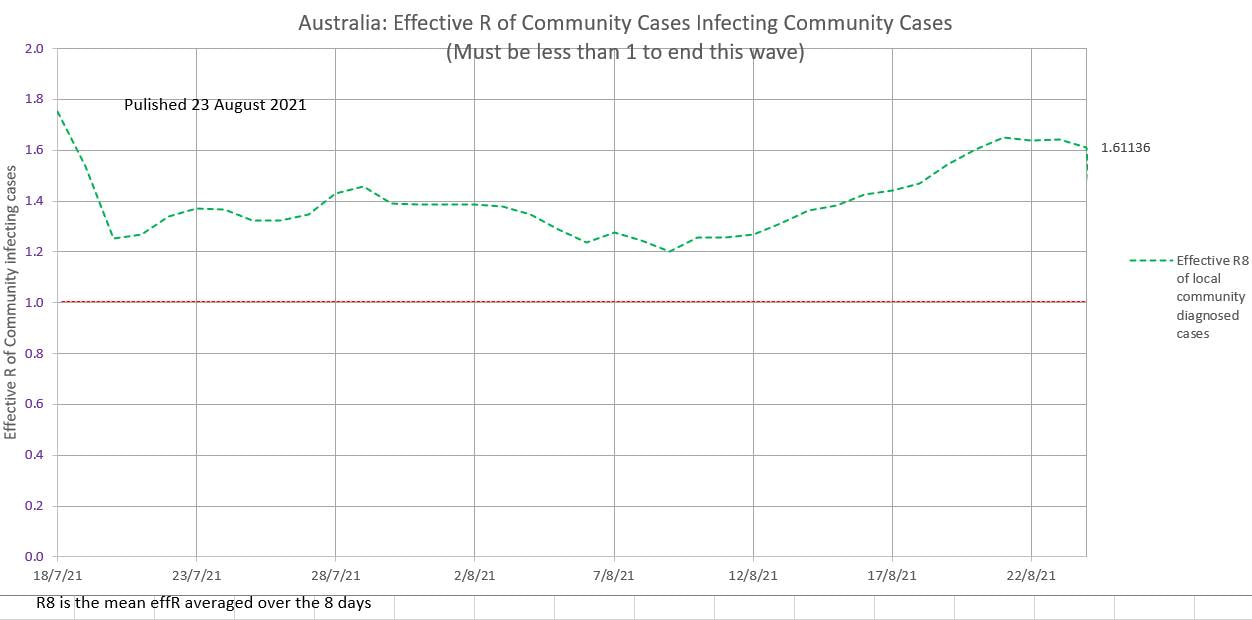
 RSS Feed
RSS Feed